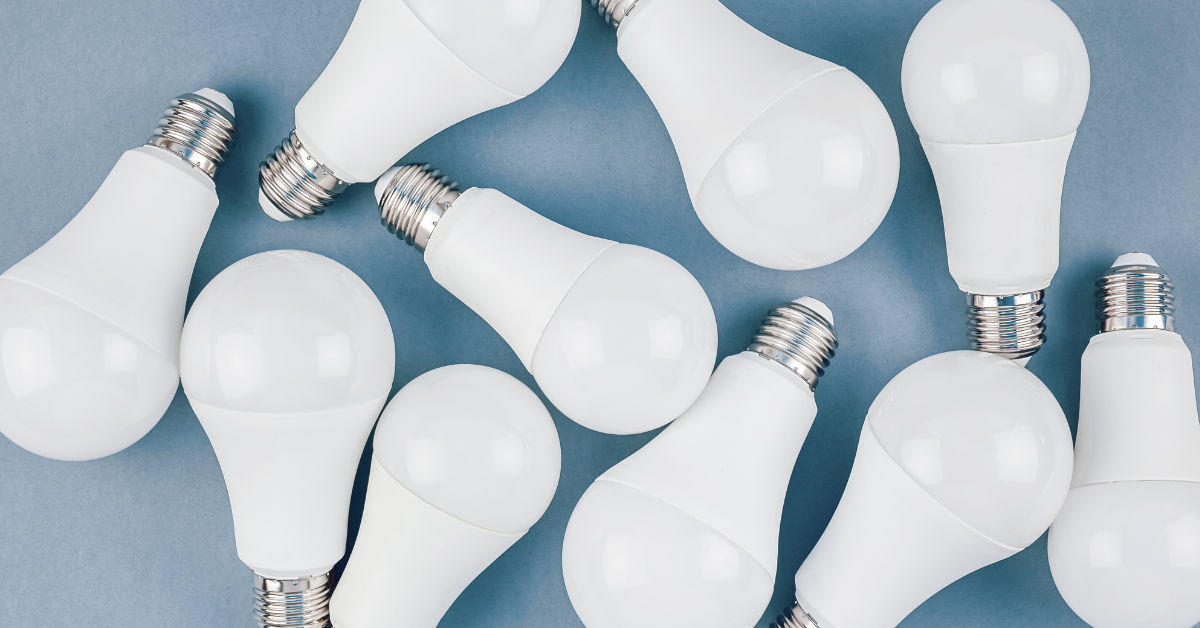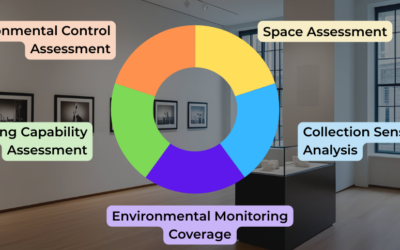Lighting is an essential element of museum display, but it can also pose a significant threat to the preservation of museum collections. Exposure to light can cause irreversible damage to many types of materials, such as fading, discoloration, embrittlement and cracking. Therefore, choosing the right light bulbs for museum display is a crucial decision that requires careful consideration of the quality, quantity and duration of light, as well as the sensitivity of the objects on display.
Let’s review some of the different types of museum light bulbs and see how they can support preventive conservation goals, while providing adequate illumination for visitors. We will also discuss some of the factors to consider when selecting and installing museum light bulbs, such as color rendering, color temperature, ultraviolet (UV) radiation, infrared (IR) radiation, energy efficiency and cost.
Balancing preventive care and visibility
According to the International Council of Museums Conservation Committee (ICOM-CC), Preventive conservation involves “all measures and actions aimed at avoiding and minimizing future deterioration or loss. They are carried out within the context or on the surroundings of an item, but more often a group of items, whatever their age and condition. These measures and actions are indirect – they do not interfere with the materials and structures of the items. They do not modify their appearance.”
Thus, preventive (or preventative) conservation is the practice of minimizing or preventing deterioration and damage to museum collections by controlling/modifying the environmental conditions and handling procedures. Sometimes referred to generally as collections care or preventative care, it aims to extend the lifespan of museum objects and reduce the need for costly and invasive treatments in the future.
Preventative care can also include concepts of managed loss or decline, meaning that there is an acceptance of the inevitability of deterioration over time and an understanding that preventive conservation must strike a balance between preservation and public use. This is especially relevant when talking about light exposure, as light damage is irreversible.
One of the main preventive conservation goals regarding light is to limit the exposure of museum objects to light, especially UV and IR radiation, which can accelerate the degradation of organic materials. According to the Canadian Conservation Institute (CCI), light exposure should be kept as low as possible, while still allowing for satisfactory viewing by visitors. The traditional rule is to keep light at fixed, low intensities. This old guideline from the 1970s and 1980s CCI publications recommends that light levels should not exceed 50 lux for highly sensitive materials (such as textiles, watercolors, photographs and leather), 150 lux for moderately sensitive materials (such as oil paintings, wood and bone) and 300 lux for insensitive materials (such as ceramics, metal and stone).
Another goal that revolves more around visibility than conservation relates to color rendering. The goal is to use light sources that have good color rendering properties, meaning that they can reproduce the colors of objects accurately and faithfully. Color rendering is measured by the Color Rendering Index (CRI), which ranges from 0 to 100. A higher CRI indicates a better color rendering performance. The CCI suggests that museum light sources should have a CRI of at least 85 although some institutions want at least 90.
Museum light bulbs also have specific color temperatures, meaning that they produce light that has a certain hue or tint. Color temperature is measured in kelvins (K), which indicate the degree of warmth or coolness of light. A lower color temperature means a warmer or redder light, while a higher color temperature means a cooler or bluer light. Color temperature should be chosen depending on the levels of light in the museum, desired contrast for the objects, and general exhibition colors.
What are the best museum light bulbs?
There are many types of light bulbs available on the market, but not all of them are suitable for museum display. Some of the most common types of light bulbs are incandescent, fluorescent, halogen and LED (light-emitting diode). Each type has its own advantages and disadvantages in terms of quality, quantity and duration of light, as well as energy efficiency and cost.
Incandescent light bulbs: Inexpensive
Incandescent light bulbs are the oldest and simplest type of light bulbs. They produce light by passing an electric current through a thin filament of tungsten metal, which heats up and glows. Incandescent light bulbs have some benefits for museum display, such as:
- Excellent color rendering properties, with a CRI close to 100.
- A warm color temperature, usually around 2700 K.
- Inexpensive and easy to install.
However, incandescent light bulbs also have many drawbacks for museum use, such as:
- A lot of UV and IR radiation, which can damage sensitive materials.
- A short lifespan, typically around 1000 hours.
- Large energy consumption and heat generation.
Therefore, incandescent light bulbs are not recommended for museum display unless they are fitted with UV filters and dimmers to reduce their harmful effects. If they are found in storage spaces, make sure objects are mostly covered and consider switching to more energy efficient light bulbs when any budget becomes available.
Fluorescent light bulbs: Long lifespan
Fluorescent light bulbs produce light by passing an electric current through a tube filled with mercury vapor and coated with phosphor powder. The mercury vapor emits UV radiation, which excites the phosphor powder and causes it to emit visible light. Fluorescent light bulbs have some advantages for museum display, such as:
- Less UV and IR radiation than incandescent light bulbs.
- A long lifespan, typically around 10 000 hours.
- They consume less energy and generate less heat than incandescent light bulbs.
However, just because they might be better than incandescent light bulbs doesn’t mean they’re great as museum light bulbs.
- They have poor color rendering properties, with a CRI ranging from 50 to 90.
- They have a variable color temperature, depending on the type and quality of the phosphor powder.
- They contain mercury, which is toxic and can pose environmental and health hazards if the bulbs break or are disposed of improperly.
Due to these characteristics, fluorescent light bulbs are not generally recommended for museum display unless they are of high quality and specially designed for museum use. These include museum grade fluorescent lamps, which have a CRI of at least 80 and a color temperature of around 3000 K. Fluorescent bulbs might also require UV tube filters which need to be certified against fire risk to avoid igniting.
Halogen light bulbs: High color rendering
Halogen light bulbs are a type of incandescent light bulb that contain a small amount of halogen gas, such as iodine or bromine, inside the bulb. The inert halogen gas prevents the tungsten filament from evaporating and depositing on the glass, which extends the lifespan and maintains the brightness of the bulb. Halogen light bulbs have some benefits for museum display, such as:
- Excellent color rendering properties, with a CRI close to 100.
- High color temperature, usually around 3000 K.
- A longer lifespan than incandescent light bulbs, typically around 2000 hours.
Some drawbacks of halogen light bulbs for museum display are:
- A lot of UV and IR radiation, which can damage sensitive materials.
- A high energy consumption and heat generation.
- They are more expensive than incandescent light bulbs.
Halogen light bulbs are not recommended for museum display unless they are fitted with UV filters and dimmers to reduce their harmful effects. Their high energy cost and heat emissions which may increase object deterioration rates also make them unadvisable.
LED light bulbs: Energy efficient and long-lasting
LED light bulbs produce light by passing an electric current through a semiconductor material, which emits photons of different wavelengths depending on the type and composition of the material. LED light bulbs have become the most recommended museum light bulb due to the following reasons:
- They emit very little or no UV and IR radiation, which is ideal for museum objects.
- They have a very long lifespan, typically around 50 000 hours.
- They consume very little energy and generate very little heat.
- They are available in a wide range of color rendering properties and color temperatures.
However, before you go out to buy the first LEDs you can find, keep in mind that:
- LEDs vary widely in the quality of light they provide, depending on the manufacturer and the model.
- Bad LEDs can cause more damage and fading than good quality halogens due to excesses of blue/violet spectrum light.
- They are more expensive than other types of light bulbs.
Thus, LED light bulbs are recommended for museum display only if they meet certain criteria of quality and performance. These include having a CRI of at least 85, a color temperature between 2700 K and 4000 K, and a spectral power distribution that minimizes blue and violet light emission. The CCI provides a definition of “good” and “excellent” LED lamps for museum use, as well as a step-by-step guide to LED lamp selection.
Conclusion
Choosing the right museum light bulbs for display is not a simple task. It requires balancing the needs of preventive conservation with the needs of visual perception. It also requires considering the characteristics and limitations of different types of light sources, the infrastructure of the museum, and the budget available. Among the various options available, LED light bulbs offer the most potential for museum display, as they can provide high-quality light with minimal damage to museum objects. However, not all LED lamps are created equal, and it is important to select those that meet the standards and guidelines for museum use.
If you enjoyed this article on museum light bulbs, don’t miss our other blog posts on:
- Museum Lighting Design: Natural vs. Artificial Light Sources
- How LED Lighting For Museums Helps Conservation & Sustainability
- Museum Lighting Guidelines – 7 Open Access Articles To Help Your Collection
- Choosing Museum Lights for Paintings – 7 Aspects To Consider
- Balancing Light Levels in Museums & Preventive Conservation Goals
If you want specific information on what brands museums are buying, don’t be afraid to ask in the Community!
If you have any questions about environmental monitoring, integrated pest management, or just want to talk about preventative conservation, please reach out to us! Don’t forget to check out our blog or join our community of collections care professionals where you can discuss hot topics, connect with your peers or even take a course to get familiar with the Conserv platform.




